Waitomo Glowworm Caves Visitor Centre – Rises From The Ashes
The Development Of Cultural Elements To Enhance The Visitor Experience
Waikato Conservator, Department of Conservation, Hamilton, New Zealand
Email: gmartin@doc.govt.nz
Abstract
This paper is presented to ACKMA in the memory of Walter Anderson, Kaumatua, Local Elder, Land Owner, former Chief Cave Guide at the Waitomo Glowworm Cave, who dedicated his life to the benefit of the Glowworm Cave and enhanced the visit for thousands of people throughout his lifetime.

In memory of Walter Anderson, Kaumatua, Owner and former Chief Guide
Background
The facilities buildings at the Waitomo Glowworm Caves were completely razed to the ground from a fire on 14 December 2005. The loss of the infrastructure coincided with the renewal of the Licence to operate the Cave Guiding business which was held by one of New Zealand’s largest tourism companies, Tourism Holdings Limited (THL). The Company remained committed to re-establishing the facilities in a way that was befitting for the status of the Glowworm Caves as a New Zealand Tourism icon.
The design contract for the new facilities was awarded to the Wellington based firm, Architecture Workshop under the direction of architect, Chris Kelly.
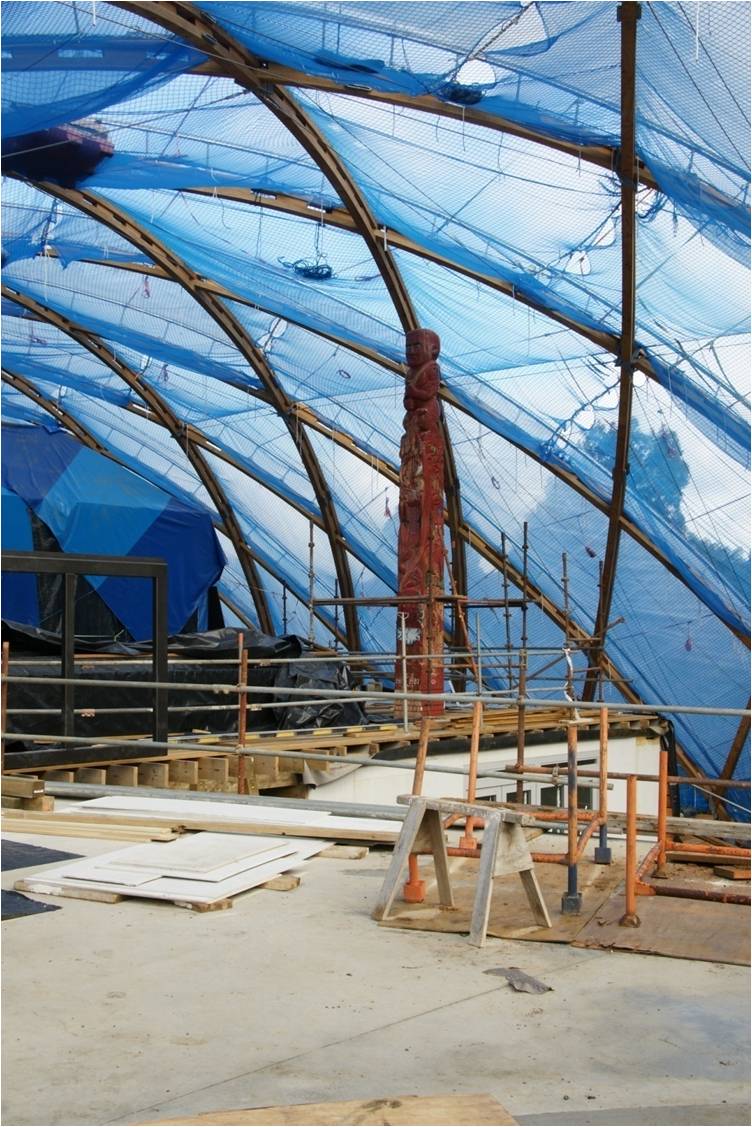

The concept for the structure was based on a hinaki (traditional Maori fishing trap) with the main frames supporting the Efte (Teflon) pillows canopy, constructed of large curved laminated timber beams representing the woven pattern of the fishing trap. This design channelled the visitors through to the cave entrance. The concept was to have the buildings constructed in a minimalistic style to produce an interesting , innovative and memorable structure, without taking anything away from the natural experience that visitors were about to see when visiting the cave.
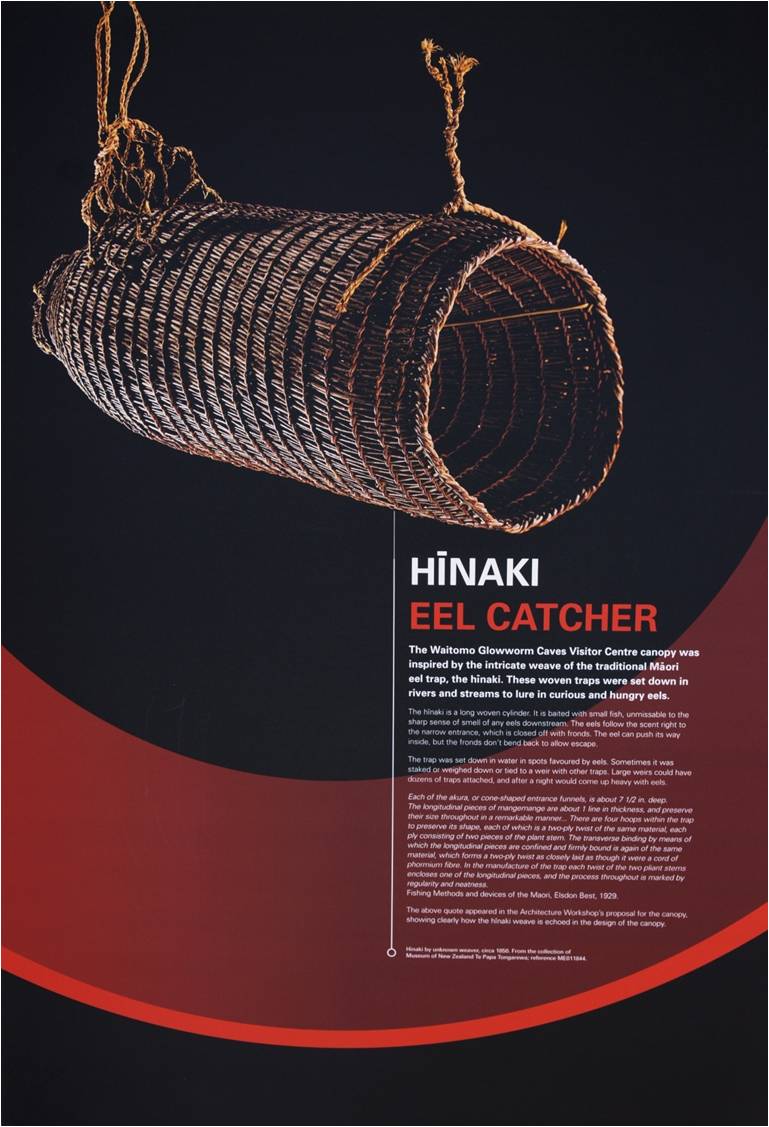
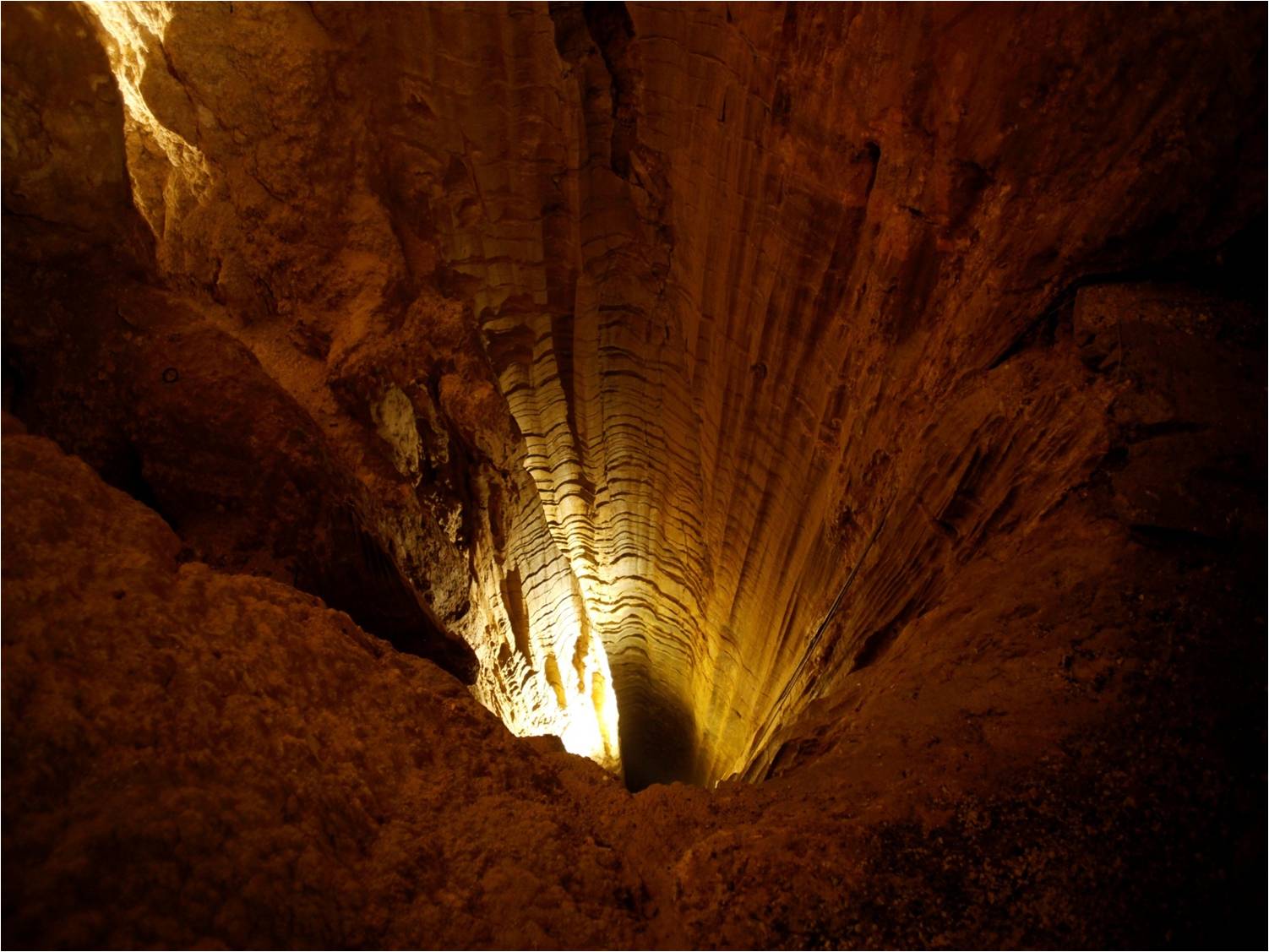
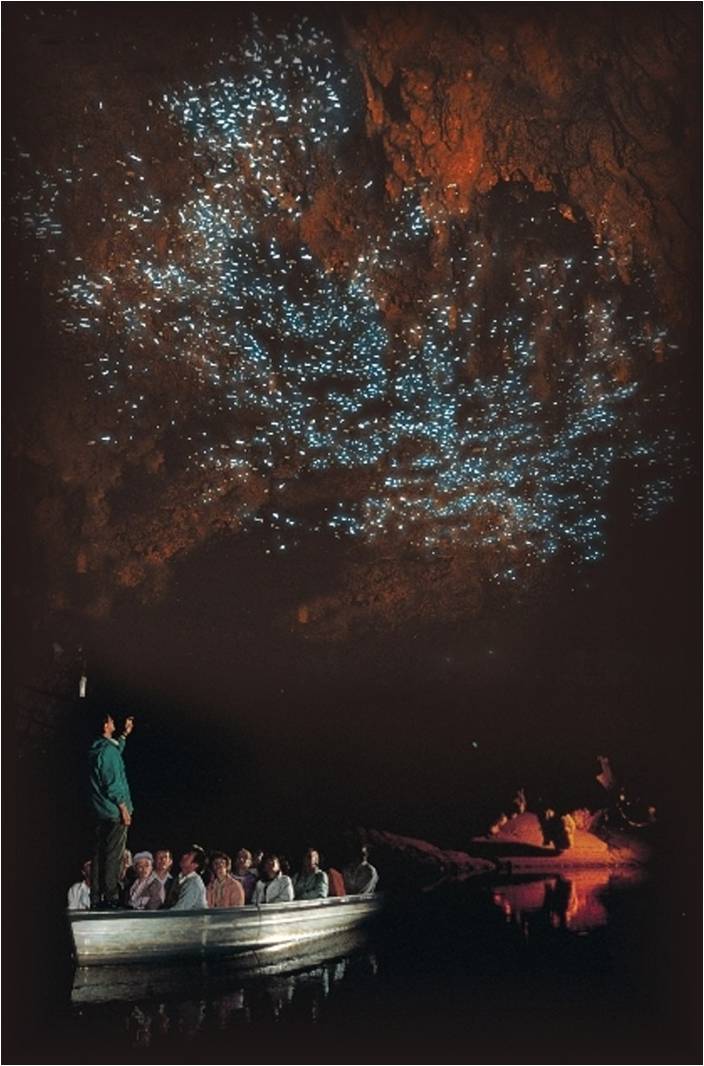
An important aspect of the design was the provision of toilet facilities sufficient to accommodate the high volume of visitors to this location, as the Caves are often the first stop off point for many visitors who arrive by tour coaches from Auckland. The toilet facilities are positioned right at the entrance to the facility and are built into the embankment from where the foundations for the curved beams of the canopy structure are set. The three levels of buildings within the overarching structure contain a 250 seat restaurant on two levels, a cafe, souvenir shop, audio visual theatre, meeting rooms, display/exhibition area, office administration and cave guides rooms, and a staff cafeteria.
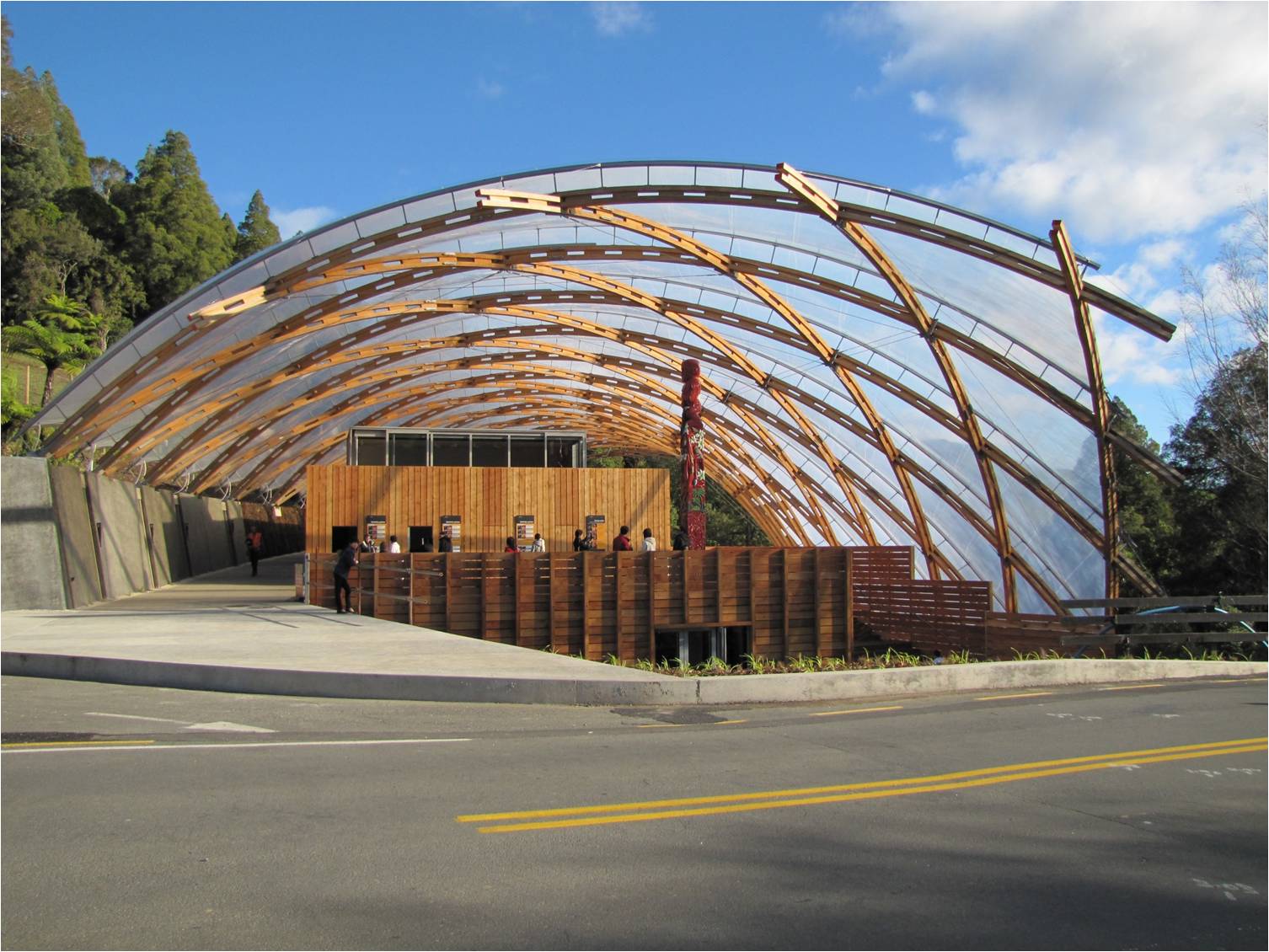



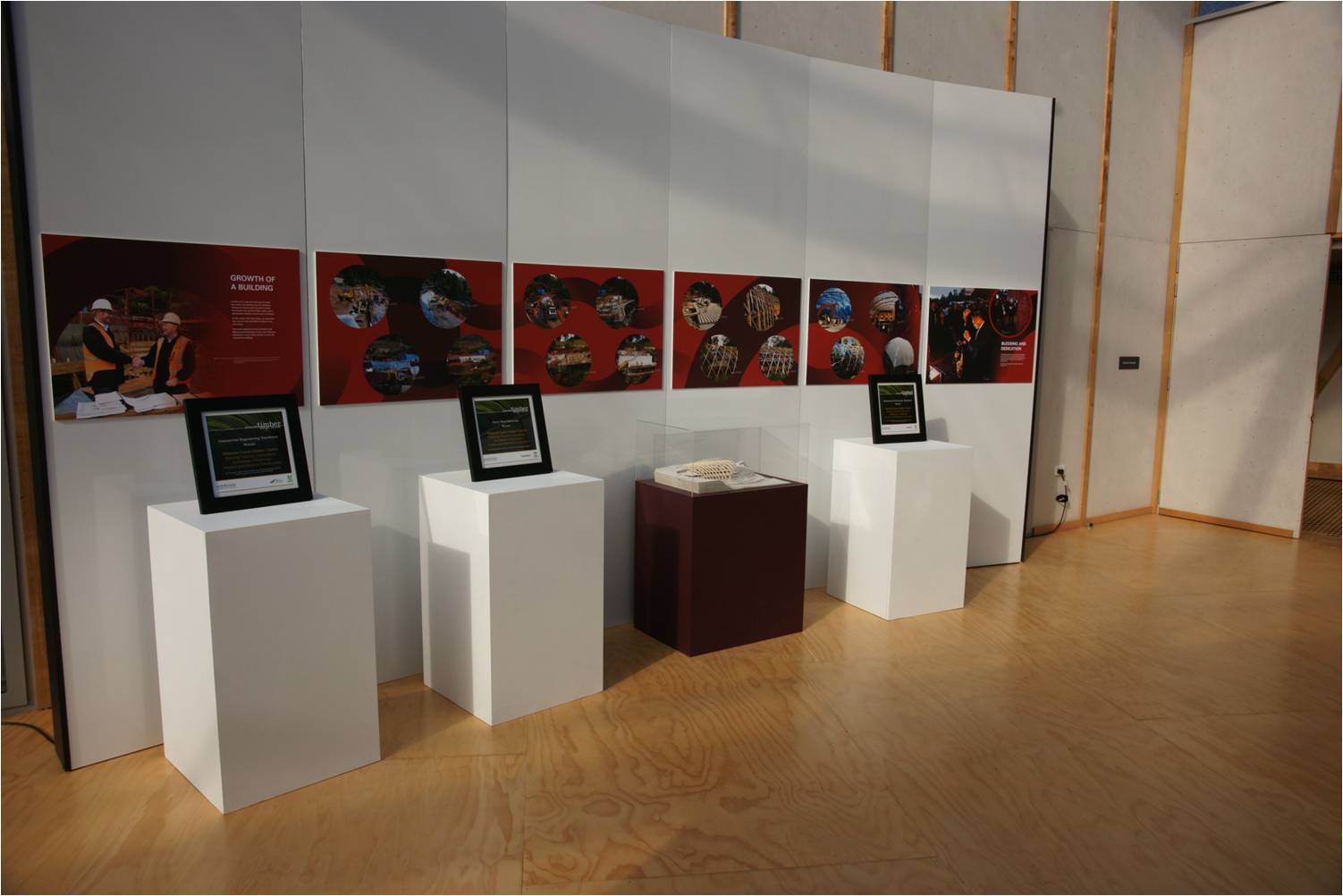
The original design concept envisaged a purpose built theatre centrally located in the structure. The concept was to provide a multi sensory experience taking visitors on a journey to the centre of the earth starting with the Maori mythology of the “creation” story. The theatre was to be state of the art, high technology with sound effects, hot and cold temperature differentials and visitors would stand in front of individual monitors which would display different aspects of the story. As this part of the project developed, the production costs escalated to more than $5 million and the decision was taken to abandon the concept on the grounds of costs, maintenance and a comparatively short life (5 years) before it would require refreshing or complete renewal.
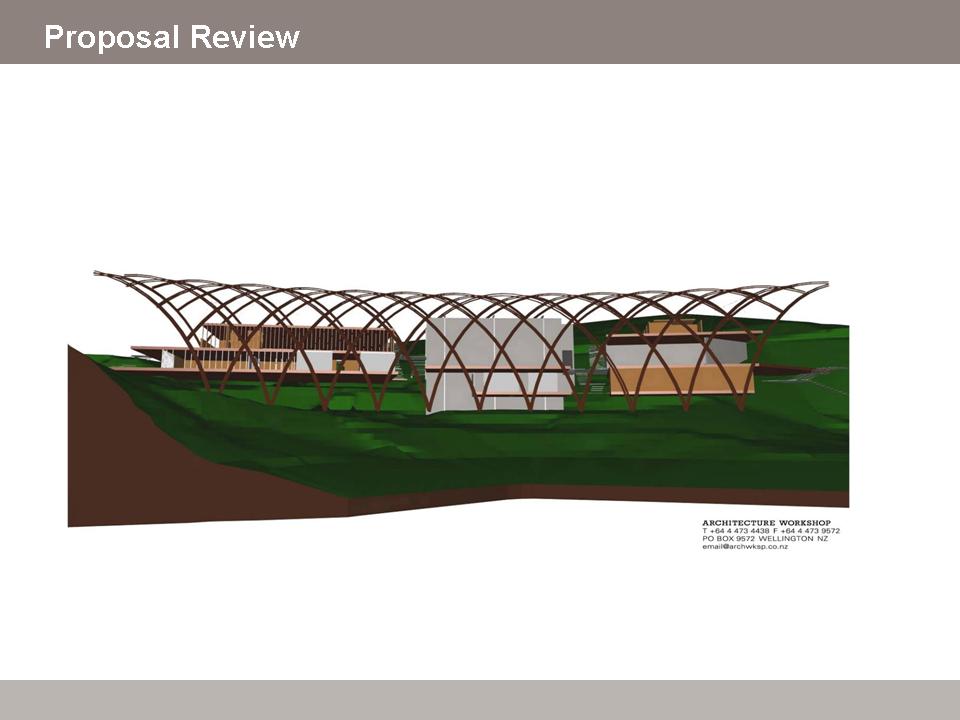
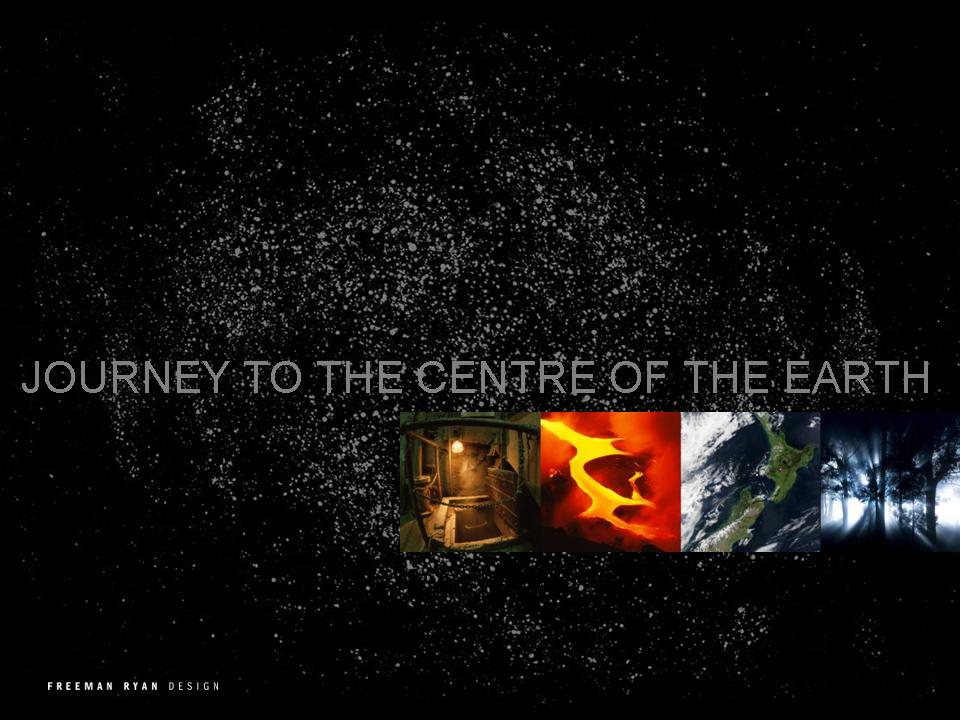
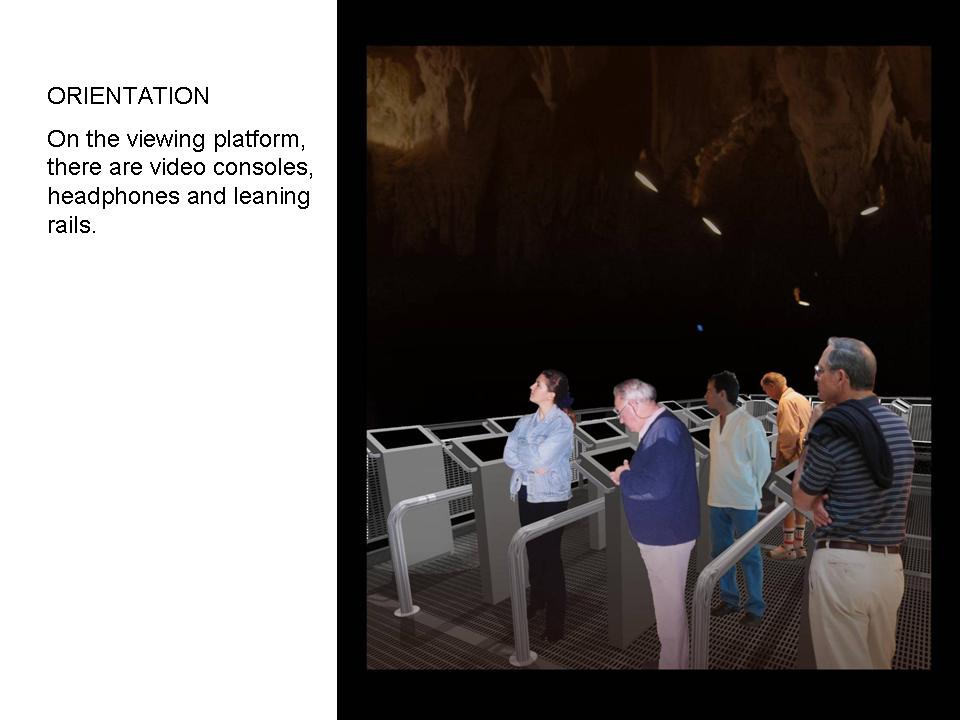

Cultural Elements
The Waitomo Glowworm Caves Management Committee worked with the designers and Tourism Holdings Limited to develop the cultural elements to be incorporated into the new facilities. The process commenced with a review of the elements that had existed in the previous facilities. These included a focus on traditional Maori designs such as the motif of the Maori god of darkness which was incorporated into signage and traditional carved pou on fences at the former entrance.
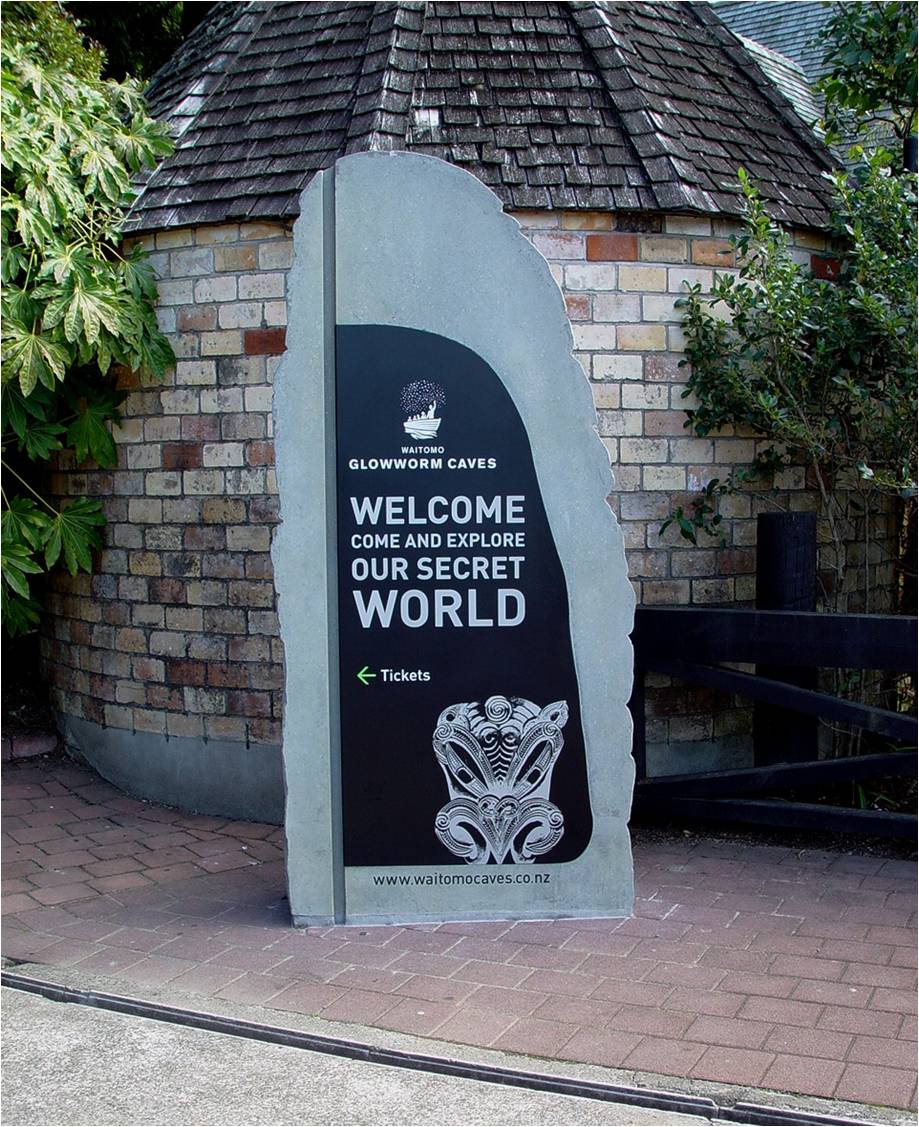
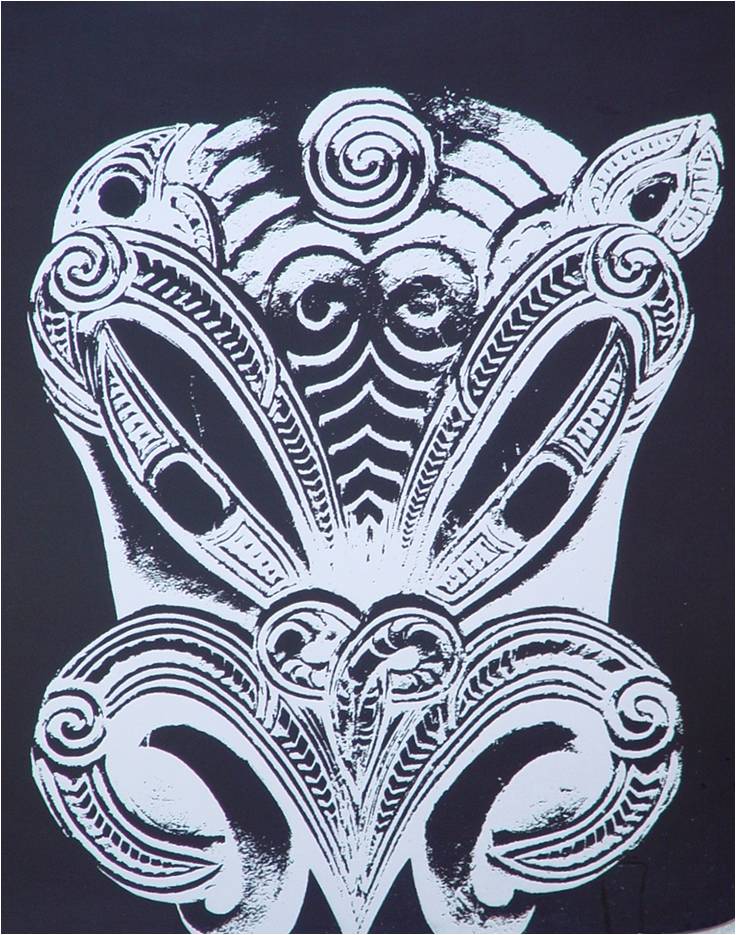



The main carved pou which depicts the traditional story of the Caves was completely refurbished and now has pride of place at the front of the building and under the shelter of the canopy. This is one of the most photographed Maori carvings in New Zealand and its position needed to provide sufficient space for visitors to take the famous photo as part of their experience.
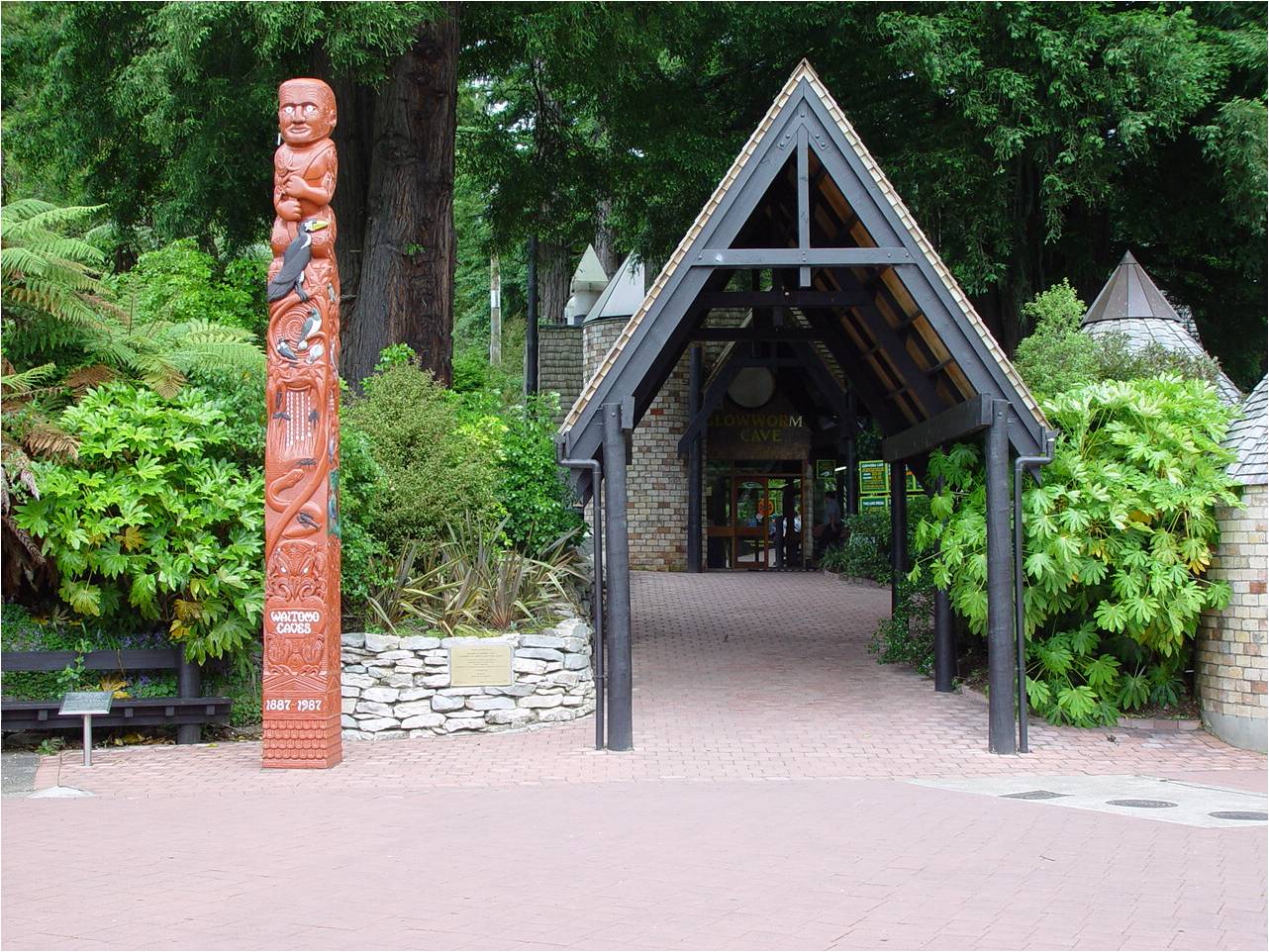

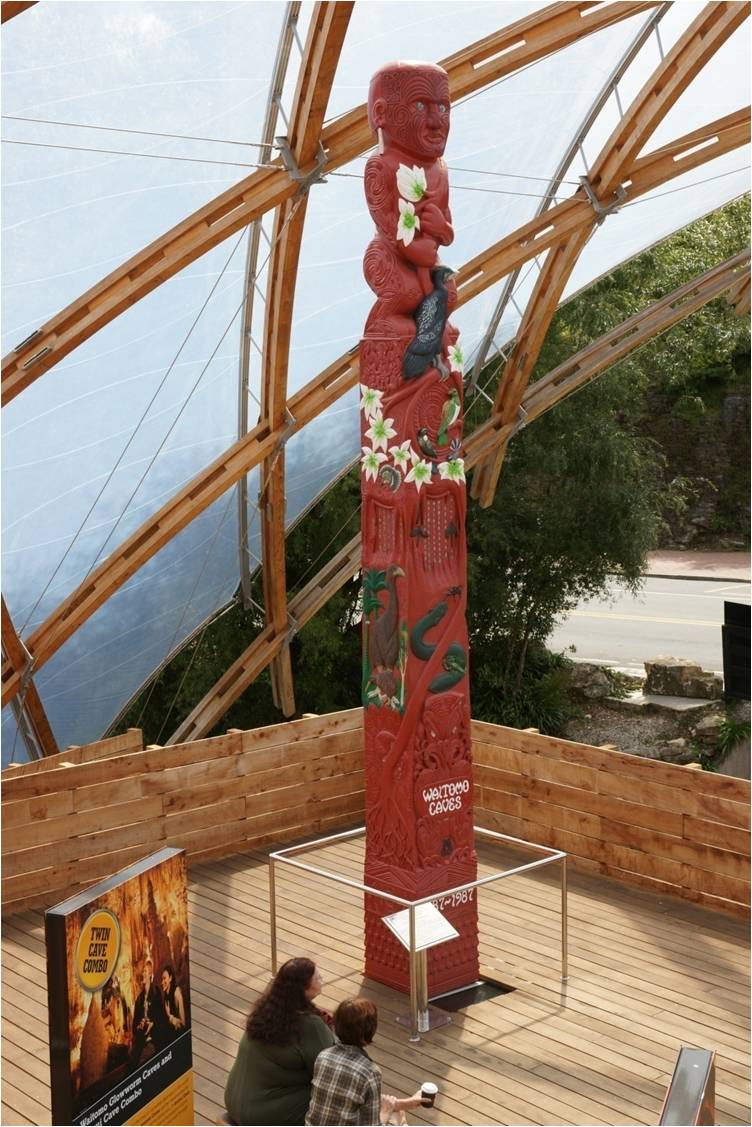
Structure Design Issues
The Efte (Teflon) pillows which blanket the canopy substructure, were designed with the expectation that the air temperature within the structure would not be greater than 2 – 3 degrees C above the external ambient temperature. This issue was of particular importance to the Cave Owners as the control of temperature within the cave is essential to maintain the optimal environment and habitat for the survival of the glowworms. It was conceivable that air warmed under the canopy through convection, could end up passing through the main cave entrance if the right breeze conditions prevailed. Post construction, temperatures of 43 degrees C were recorded in some peak summer days and as a result electric fans and umbrellas were placed to improve visitor comfort.
In the design phase consideration was given to the incorporation of traditional Maori designs in the canopy material such as the Koru or unfurling fern frond, or the traditional patterns such as those often depicted on the tahuhu or ridge poles in Whare (traditional Maori Meeting houses). The cost of this was seen as prohibitive at the time. One solution to provide shade and cooling from the intense sunlight, is to provide mechanical blinds which can be drawn up the laminated beams of the sub-structure of the canopy in strategic locations.

Efte (teflon) inflated pillows provide the roof canopy
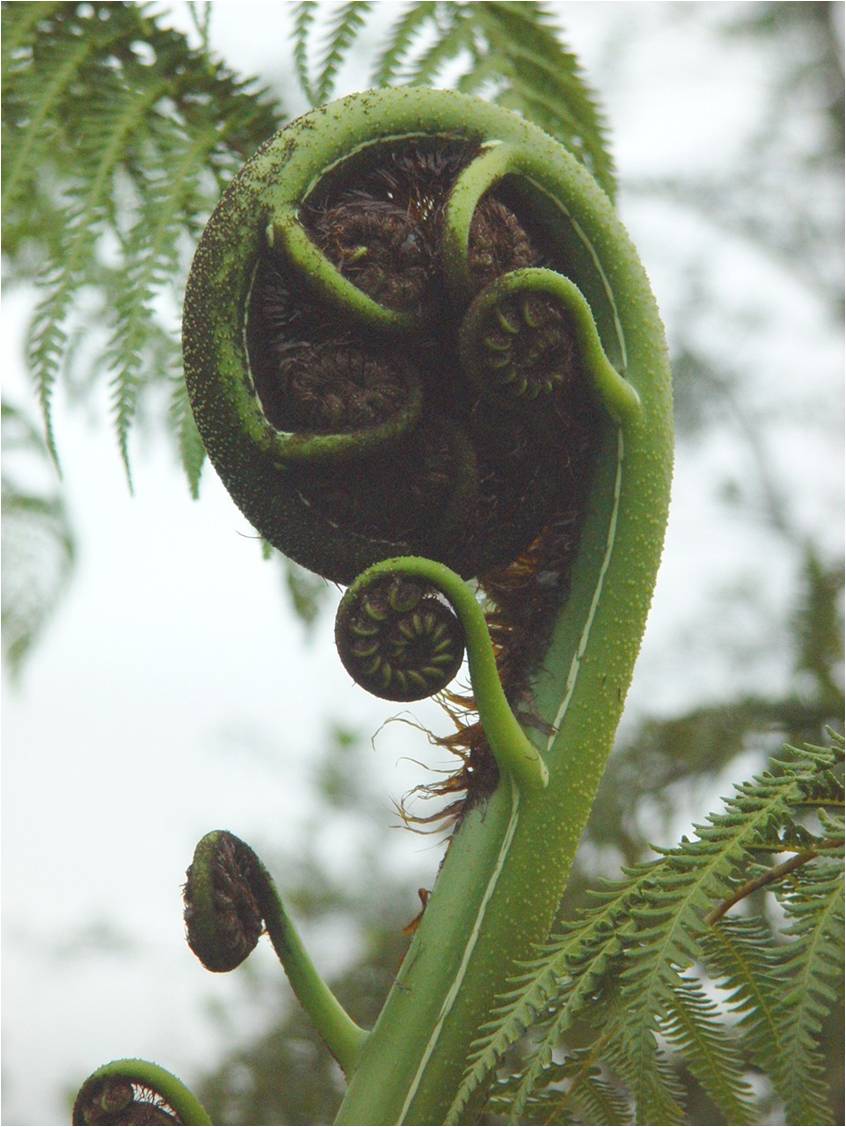
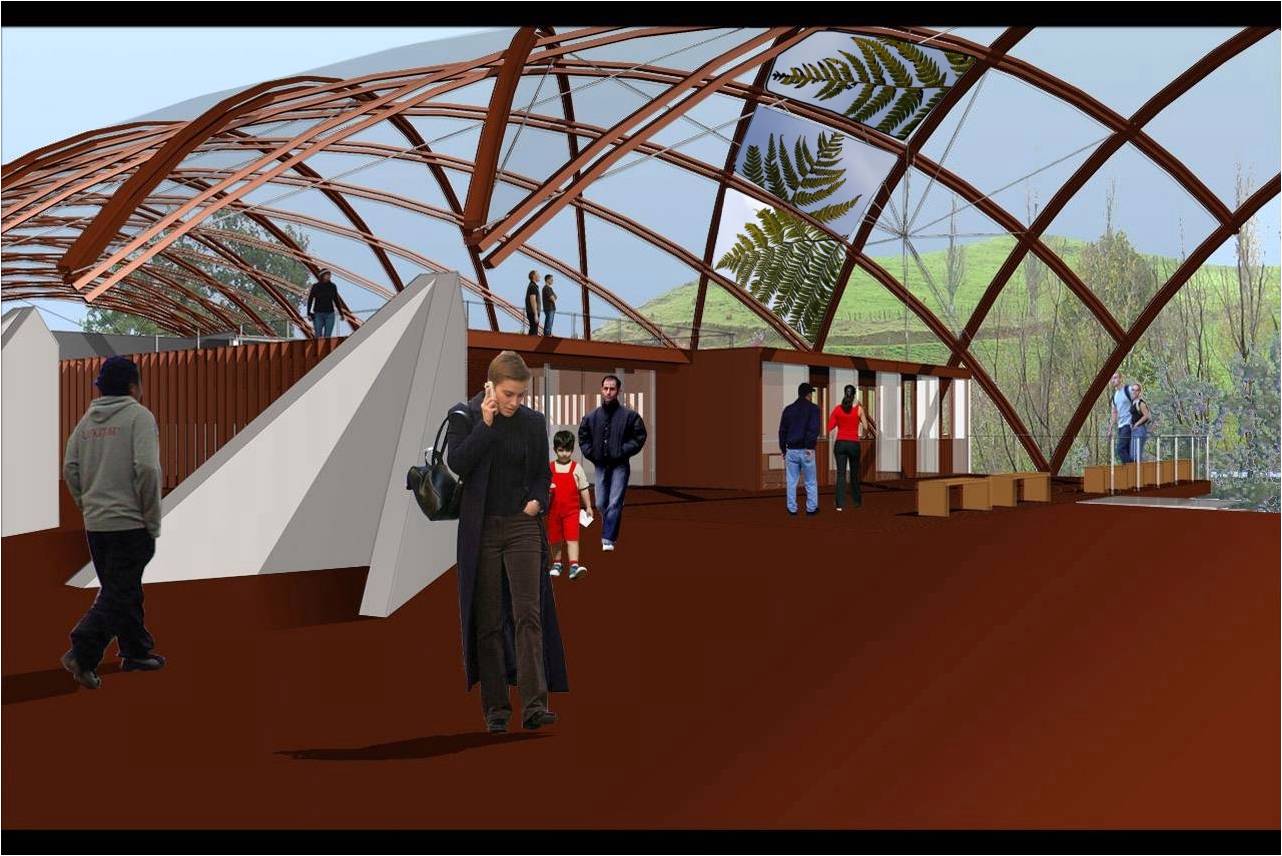
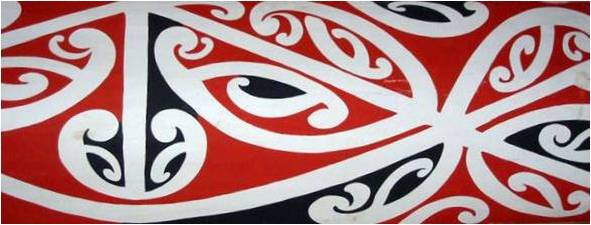
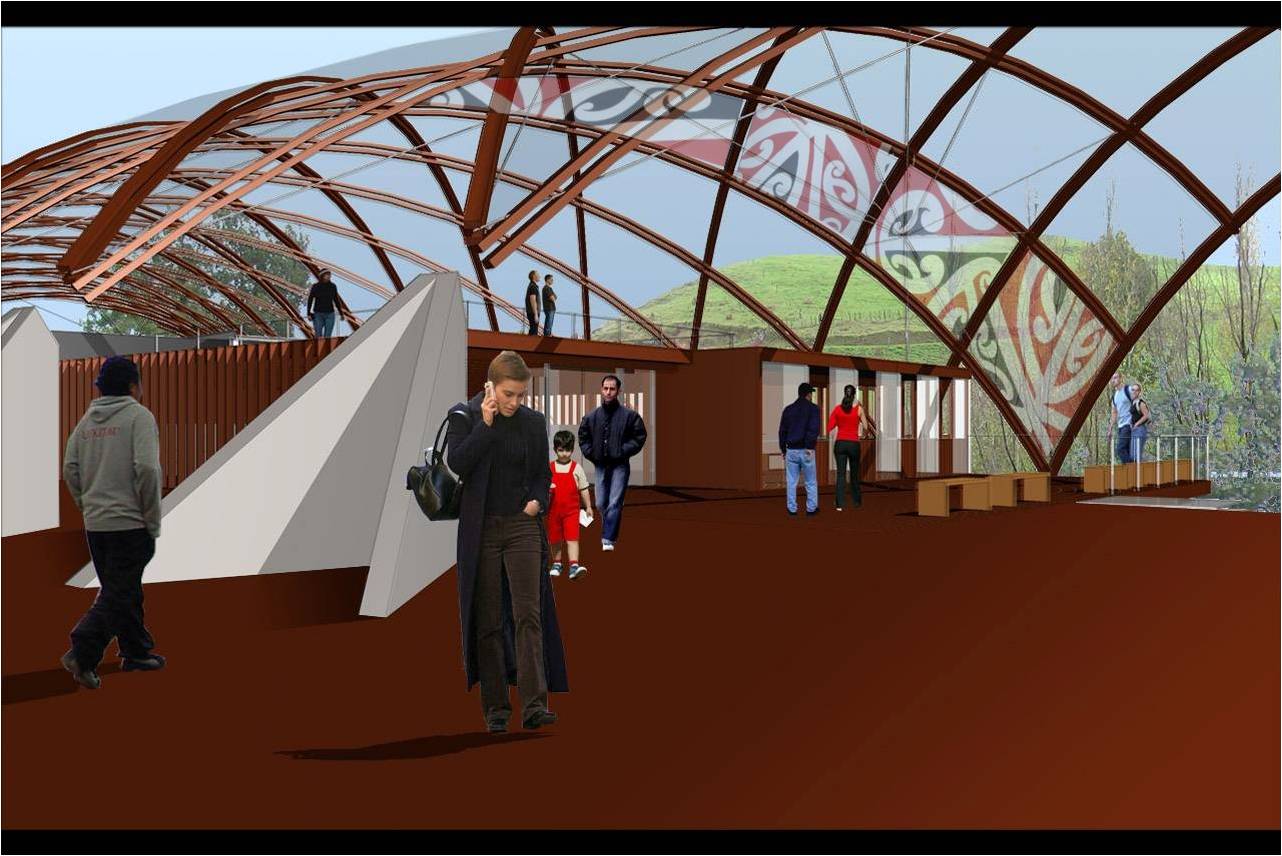
Visitation
Waitomo is on what is described as a “Tourism Triangle” in New Zealand. Auckland Airport is the largest international arrival point into the country and many visitors commence their tour of New Zealand in Auckland, travel to the Waitomo Glowworm Caves and then continue on to Rotorua to experience the “Geothermal Wonderland” before returning back to Auckland.
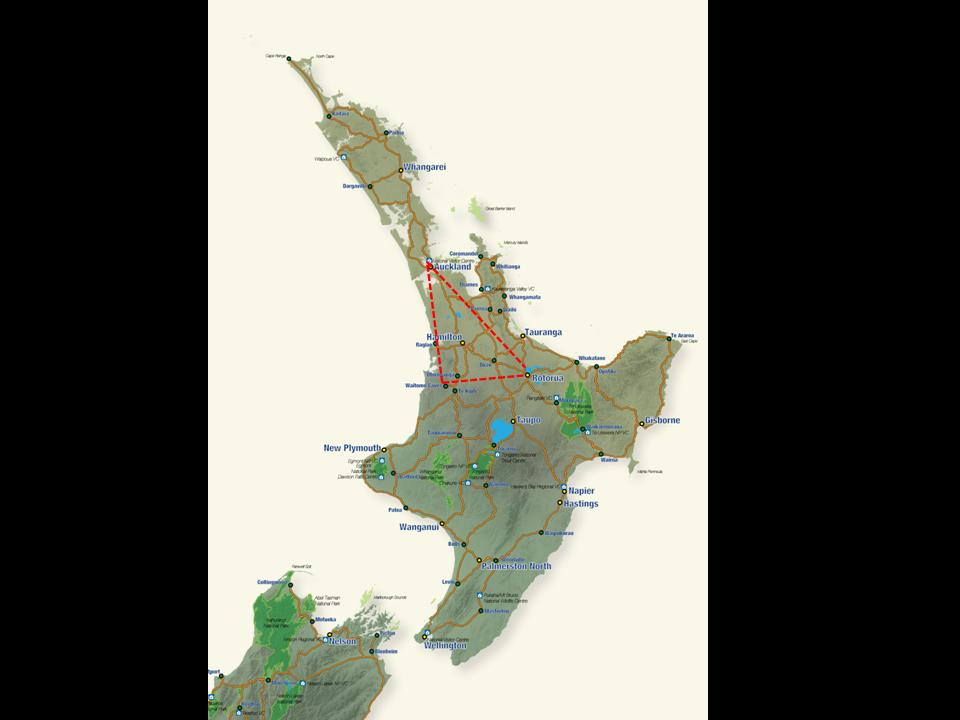
Visitation to the Waitomo Glowworm Caves has been monitored now since 1889. Eighty percent of visitors to the Caves are international and as a consequence, the Caves are important to the local, regional and national economy. In tracking the visitation over such a long period it is possible to identify every major global event, i.e. World War II, the Oil Crises, Gulf War, SARS, the Global Recession and most recently, the Christchurch Earthquakes. What is evident is that traditionally the market has recovered very quickly after each event.

Presenting a View of the Local Culture
After abandonment of the initial concept of the high-tech “Journey to the Centre of the Earth”, The Cave Resource Owners and the Lessee, Tourism Holdings Limited reconsidered what would be most appropriate in this location. The local Maori people, tangata whenua, the Ruapuha Uekaha Hapu, consulted their elders and thought about their cultural traditions and customs which are practised at significant events on their Tokikapu Marae.

The Waitomo Glowworm Caves Owners and Lessee - Tourism Holdings Ltd

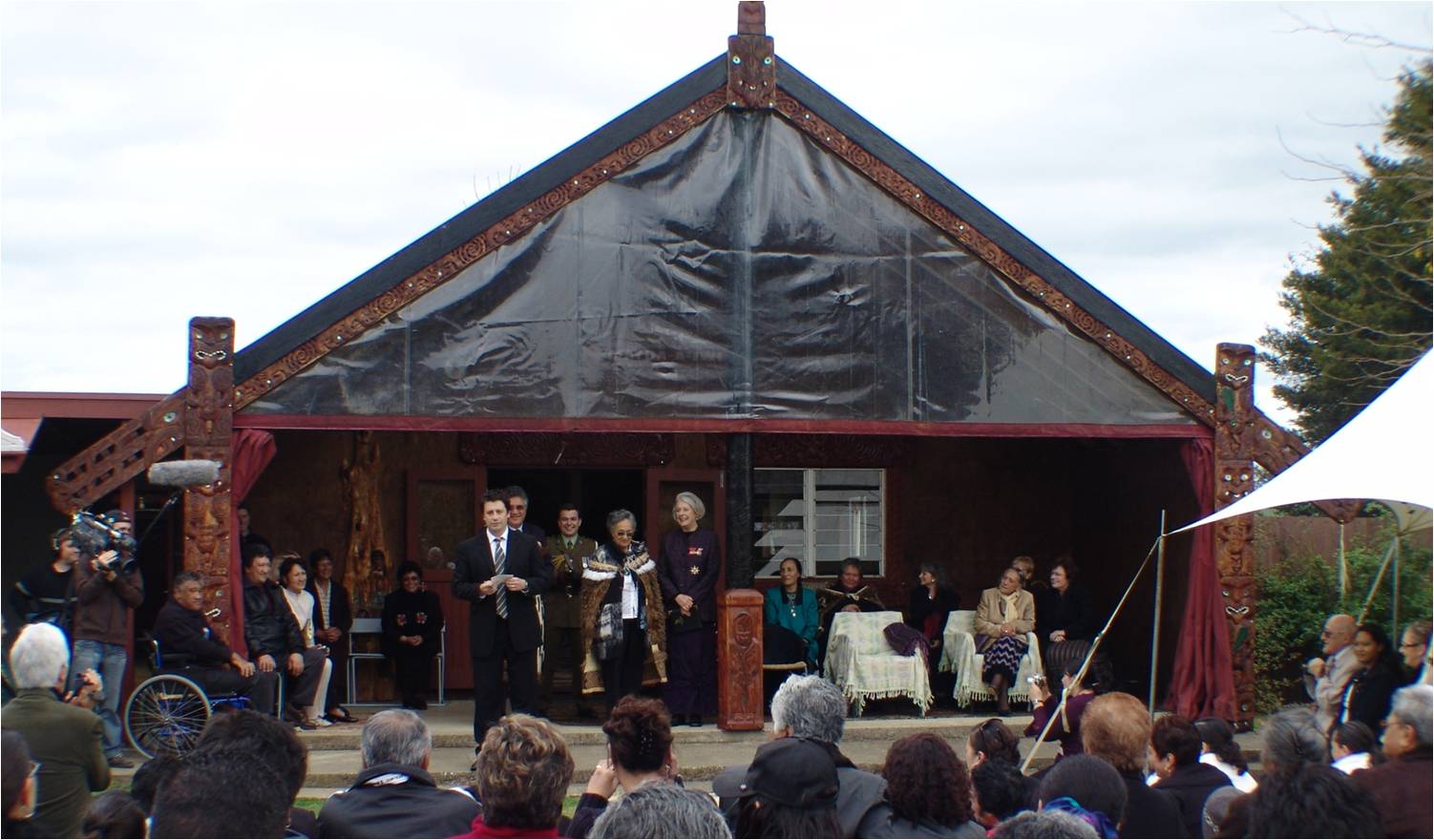
Tokikapu Marae – Waitomo

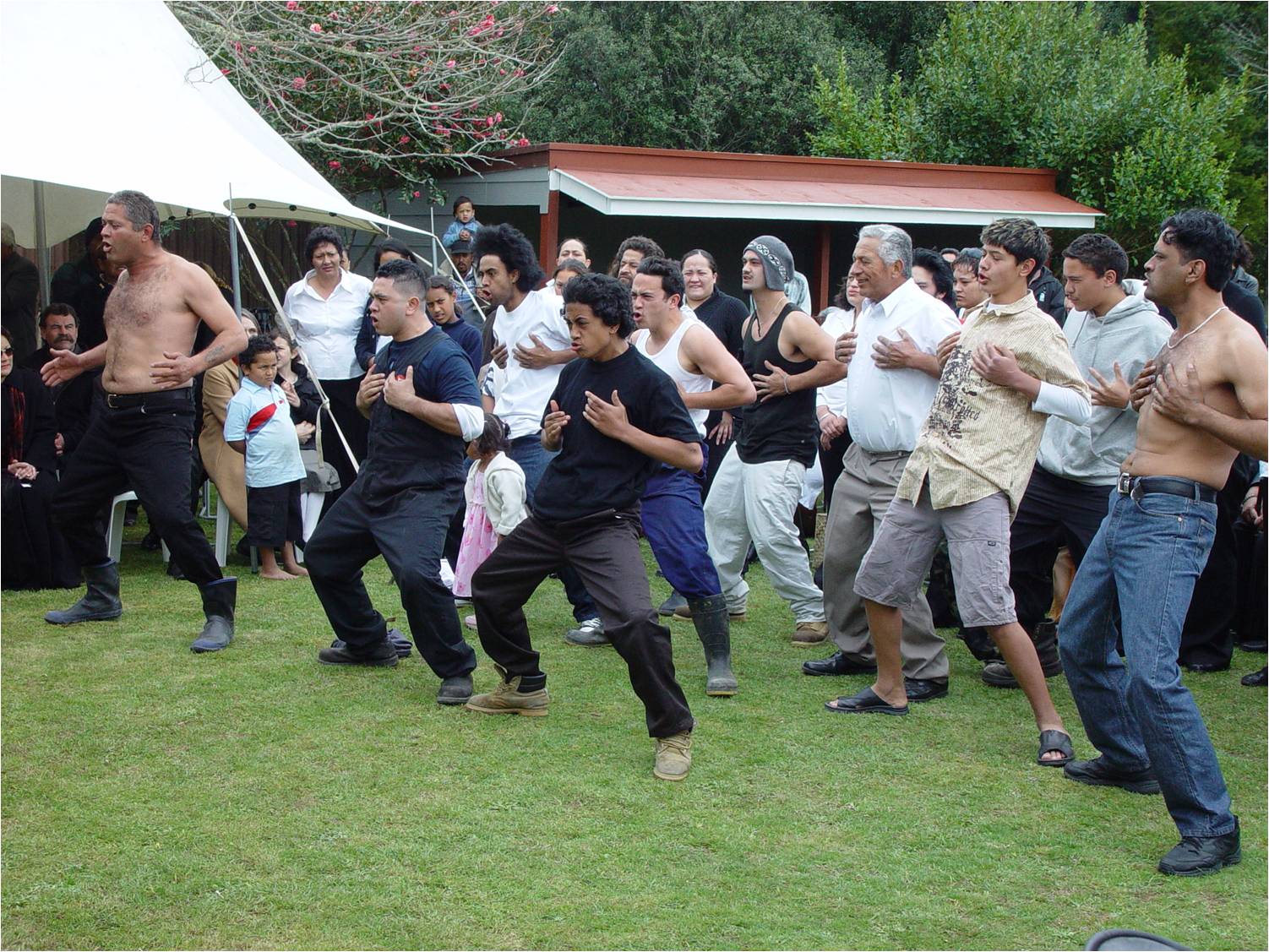
It was agreed that it would be appropriate to impart something of the local culture to visitors, most of whom are international and who have an inquisitiveness about our country and its people. The members of the Hapu did not have a desire to replicate the performing arts and cultural ceremonial traditions as that is a particular theme that is well delivered in Rotorua. Many of the visitors to the Glowworm Cave are en-route to Rotorua. The question then was “How do you capture and present the essence of this place to visitors”?
The decision was then made to contract in an Auckland Based documentary production company THEDOWNLOWCONCEPT to develop a short Audio Visual production made up of a series of interviews with local people who live in or have an attachment to Waitomo. The end result is a 12 minute production, commencing with a traditional Mihi or welcome from Kaumatua, Walter Anderson and then a series of interviews describing different aspects and insights into life at Waitomo. The show runs continuously in a purpose built Audio Visual Theatre and is designed to be incorporated into the Cave Tour and is a valuable addition to enhance the visitors’ experience and understanding of the place they are visiting.
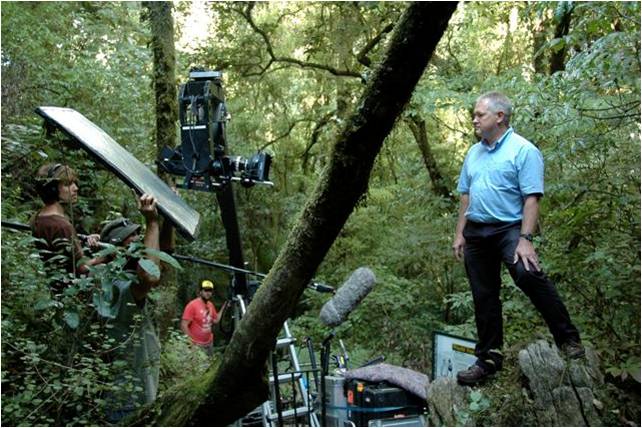
thedownlowconcept Production Company was commissioned to capture the stories
In tandem with the new Audio Visual production, has been the development of a training programme for the Cave Guides to enhance their delivery of the guiding experience for visitors through story telling techniques and the style of delivering messages and interpretation of the cave and its natural features. Having invested in a major new visitor centre, Tourism Holdings Limited have recognised the need to enhance and provide for a quality visitor experience to meet the expectations of visitors today. This enhancement of the guiding experience has commenced and it will continue to be developed in the years ahead.
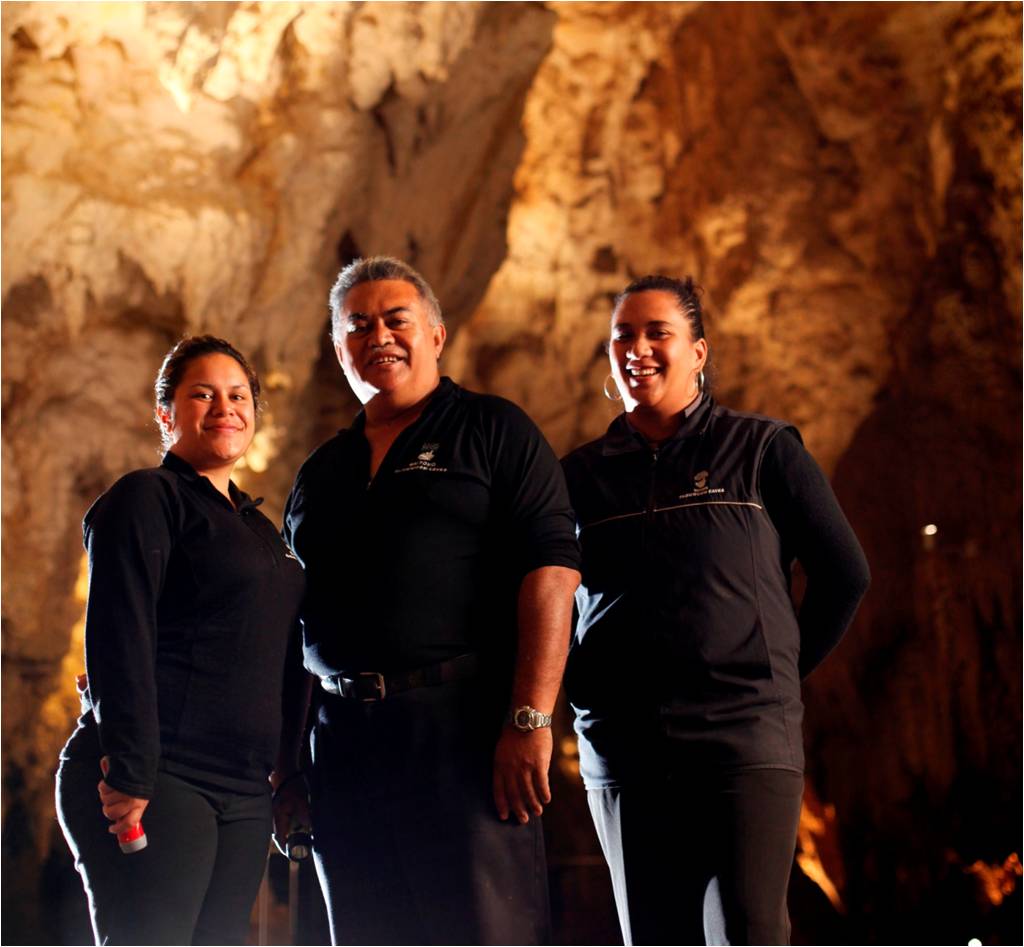
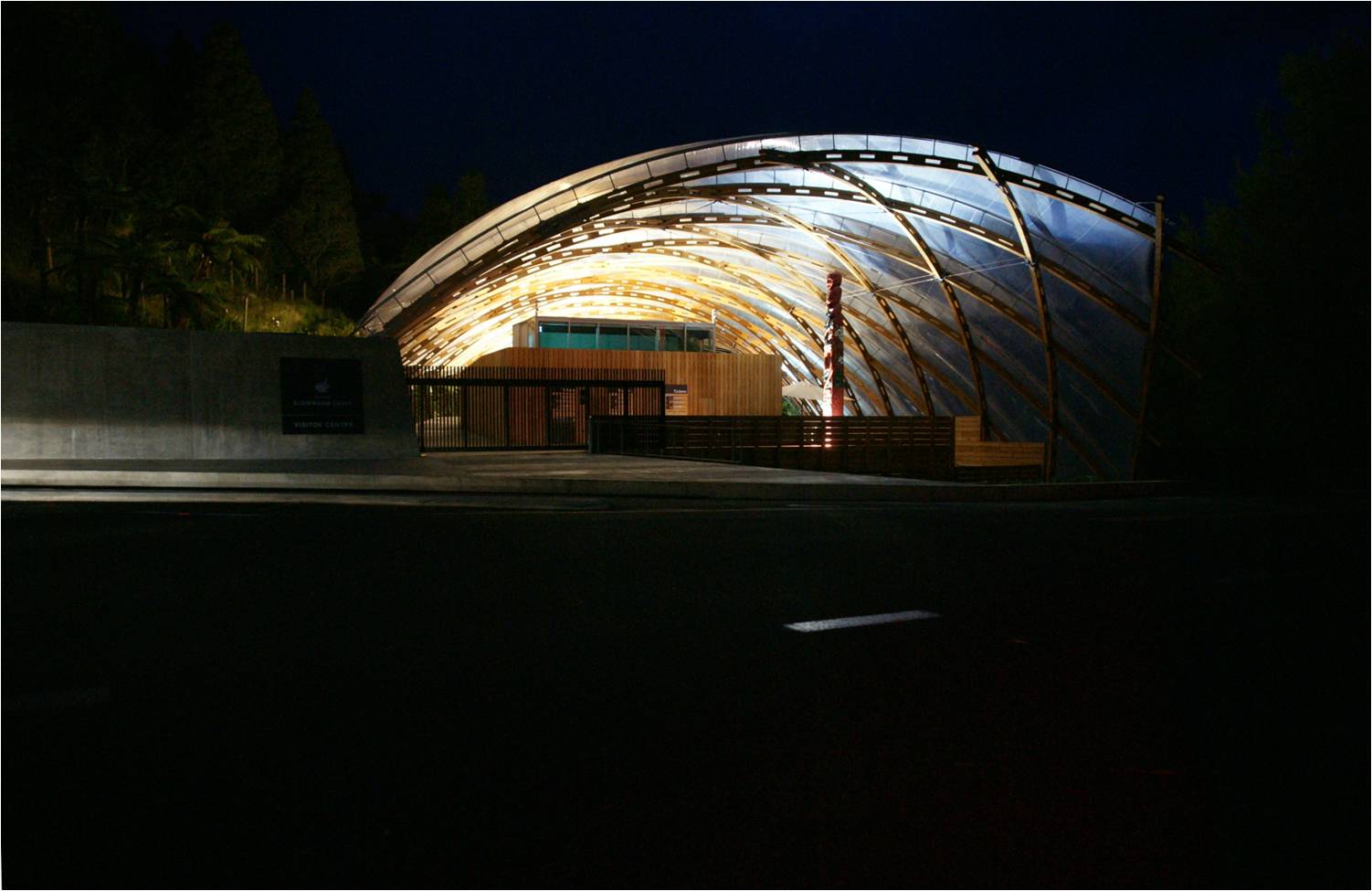
An ongoing training and development programme for guides in hosting and storytelling -Manaakitanga